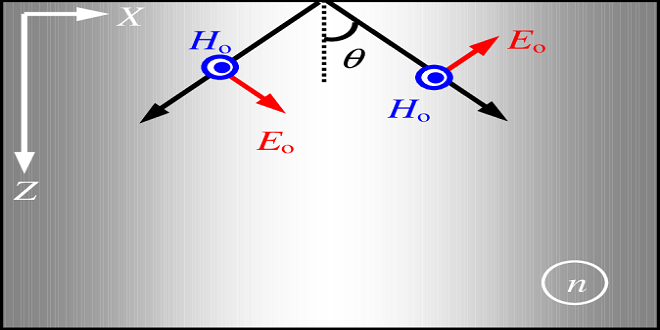Plane Waves and Refractive Index

Restricting our attention to plane waves may seem limited at first since an endless variety of waveform shapes can satisfy the wave equation in a vacuum. It turns out, however, that an arbitrary waveform can always be constructed from a linear superposition of sinusoidal waves.
Thus, there is no loss of generality if we focus our attention on plane-wave solutions. In a material, the electric field of a plane wave induces oscillating dipoles, and these oscillating dipoles, in turn, alter the electric field. We use the index of refraction to describe this effect. Plane waves of different frequencies experience different refractive indices, which causes them to travel at different speeds in materials.
Thus, an arbitrary waveform, which is composed of multiple sinusoidal waves, invariably changes shape as it travels in a material, as the different sinusoidal waves change the relationship with respect to one another. This dispersion phenomenon is a primary reason why physicists and engineers choose to work with sinusoidal waves. Every waveform except for individual sinusoidal wave changes shape as it travels in a material.
Plane Wave Solutions to the Wave Equation
Where k has units of inverse length, uˆ is a unit vector defining the direction of propagation, and λvac is the length by which r must vary (in the direction of uˆ ) to cause the cosine to go through a complete cycle. This distance is known as the (vacuum) wavelength. The frequency of oscillation is related to the wavelength.
The above cross product means that B0 is perpendicular to both E0 and k. Meanwhile, Gauss’ law ∇·E = 0 forces k to be perpendicular to E0. It follows that the magnitudes of the fields are related through B0 = kE0/ω or B0 = E0/c, in view of (2.5). The influence of the magnetic field only becomes important (in comparison to the electric field) for charged particles moving near the speed of light.
This typically takes place only for extremely intense lasers (> 1018 W/cm2, see P2.12) where the electric field is sufficiently strong to cause electrons to oscillate with velocities near the speed of light. We will be interested in optics problems that take place at far less intensity where the effects of the magnetic field can typically be safely ignored. Throughout the remainder of this book, we will focus our attention mainly on the electric field with the understanding that we can at any time deduce the (less important) magnetic field from the electric field via Faraday’s law.
Depicts the electric and the associated magnetic The is deceptive since the fields don’t actually look like transverse waves on a string. The wave is comprised of large planar sheets of uniform field strength (difficult to draw). The name plane wave is given since a constant argument in at any moment describes a plane, which is perpendicular to k.
A plane wave fills all space and may be thought of as a series of infinite sheets, each with a different uniform field strength, moving in the k direction.
Last word
At this point, let’s rewrite our plane wave solution using complex number notation. Although this change in notation will not make the task at hand any easier (and may even appear to complicate things), we introduce the complex notation here in preparation for later sections, where it will save considerable labor.




